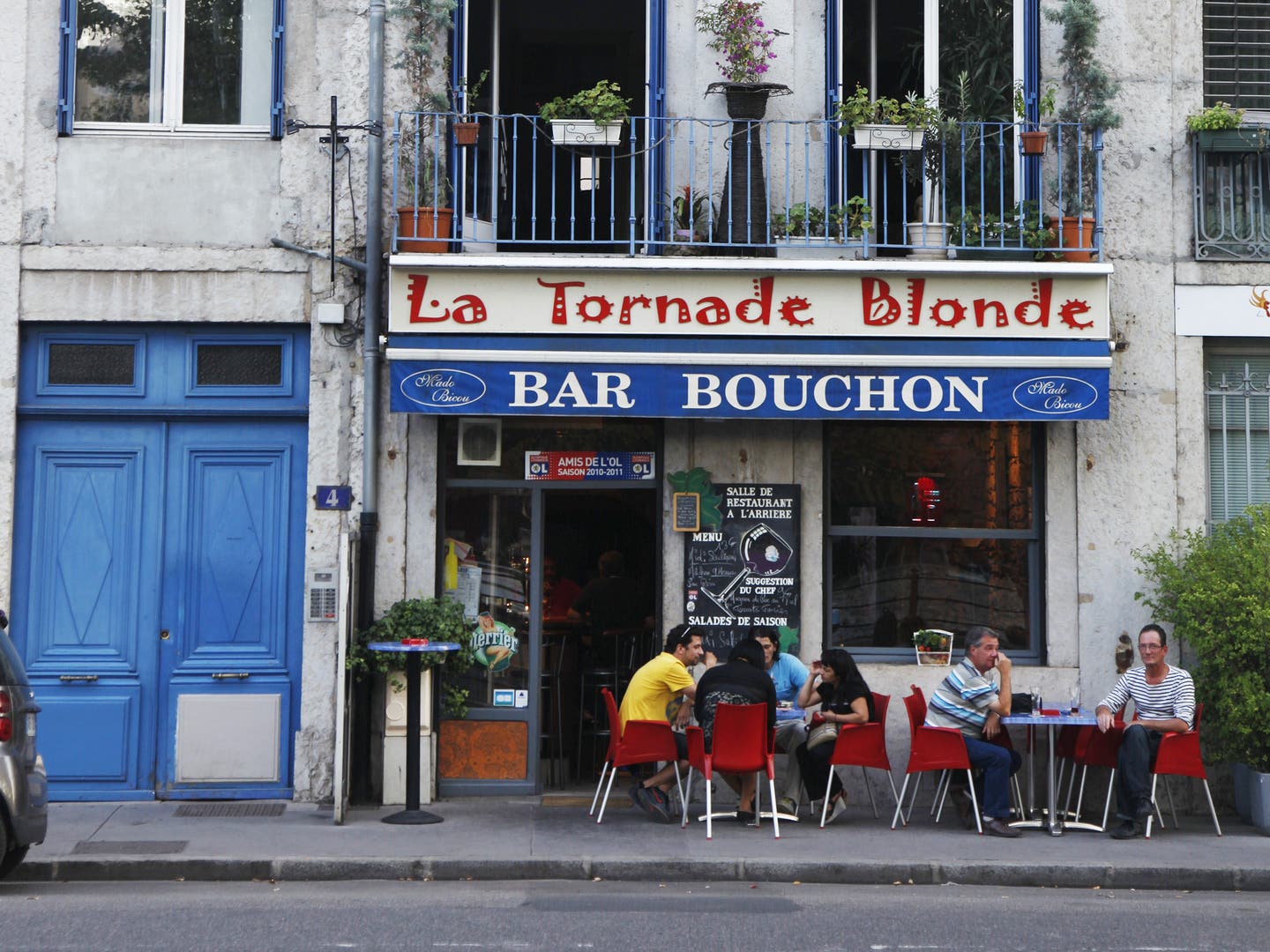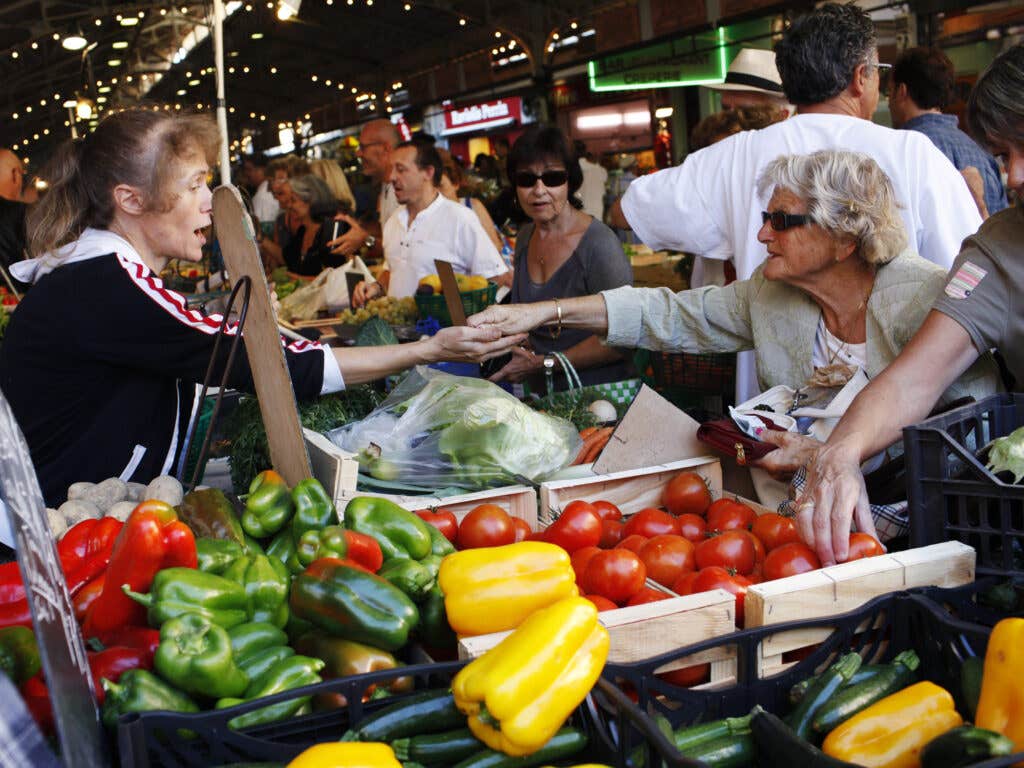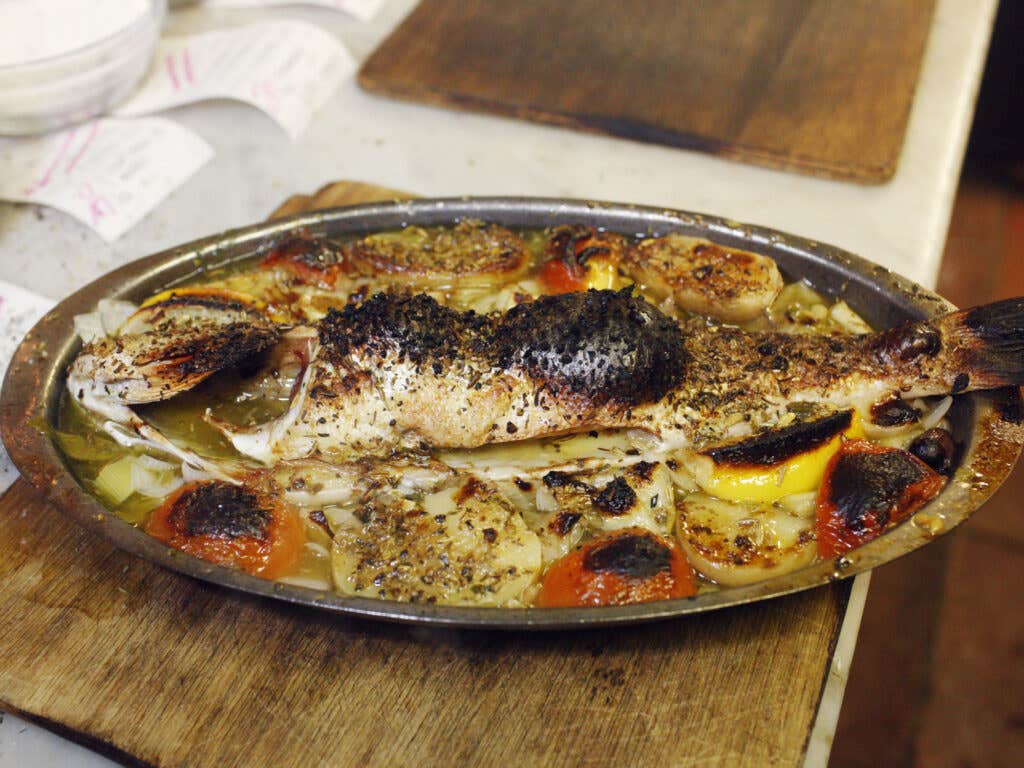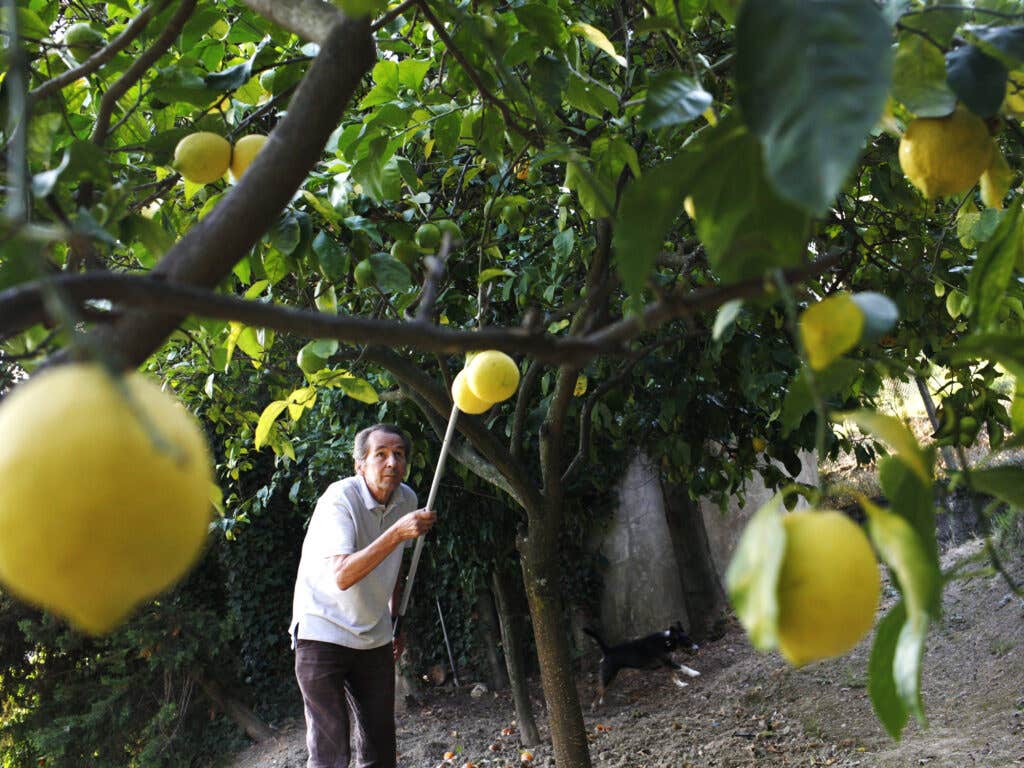
France’s Route 7: The Road to Paradise
Route 7 is France’s most legendary—and most delicious—road
Every summer, my grandparents would rent a chateau near Cap d'Antibes, an unspoiled peninsula between Nice and Cannes overlooking the Mediterranean. I was too young to remember my first trip from Geneva, Switzerland, where I was born, to La Garoupe, as we called it, shorthand for the entire area which included beaches, a lighthouse, and an old chapel. It was the 1960s, and together with my mother, father, and three sisters, I would spend the next ten summers here. Though the landscape was incomparable, with steep marble steps leading from the grounds to the boulder-lined sea, the part I cherished most was the journey there. We'd pile into our 1969 Citroen DS and embark from our home in Geneva to the south of France. The trip could have been quick if we had taken the Autoroute du Soleil, the brand-new thoroughfare that could whisk us to the Riviera in less than a day, but my father insisted that we travel the scenic route, the Route Nationale 7.
"La Nationale Sept" (the National 7), or "N7," was France's very own Route 66, a mythical road that defined summer for generations of people, including me. The meandering path, about 600 miles long, snakes its way from Paris to Menton, a small town near the border with Italy. According to historian Thierry Dubois, author of C'Etait La Nationale 7 (Editions Paquet, 2012), Route 7 is often called the spine of France, as it connected the cold north to the sunny south, traversing the Loire Valley, crossing the Rhone River, working its way through Provence, and ending at the Riviera. The road has existed under one name or another since Roman times (you can still see ruins along the way), until it became Route Nationale 7 in 1871.
During its heyday in the 1950s and '60s, the road was dubbed La Route des Vacances. A newly extended paid vacation for French workers, combined with the production of two new affordable automobiles, the Renault 4CV and Citroen 2CV, kicked of an era of traffic jams, or bouchons (the French word for "cork"), as families inched toward the South with rowboats strapped to the roofs of their cars. Residents of one Provençal village joked that during those congested times, even the pastis smelled like gasoline. To travel the road was a rite of passage; the French singer Charles Trenet even penned a song in its honor.
Restaurateurs were quick to open places where families could refuel, and there was food for every budget. My father would plan our stops according to the delicious things we would eat along the way. Each summer, we'd connect with Route 7 in Lyon, the gastronomic capital that marked the halfway point between Paris and Menton. "Three rivers flow through Lyon," my father joked, referring to the nearby vineyards, "le Rhone, la Saone, and le Beaujolais!" We'd forfeit the bouchons, the simple taverns Lyon is known for, in favor of a formal restaurant, such as La Mere Brazier, one of the first to win three Michelin stars, or the great Brasserie Georges, where I developed a taste for steak tartare, and my parents enjoyed the ripe local cheeses, like creamy St-Marcellin.
Other times when hunger struck, we could count on the casual roadside restaurants that fed travelers, as well as truckers who drove the route year round. I remember filling my plate from their generous buffets with as much leg of lamb or entrecote as I wanted. After spending a night at one motel or another, my father might say, "Let's push to Roanne," referring to the iconic Troisgros restaurant, and its famous salmon filet with tangy sorrel sauce. Or we might stop at Restaurant de la Pyramide in Vienne, the legacy of the epicure and founder Fernand Point, who died in 1955, about whom my grandparents liked to reminisce—they told me about his laugh, his expansive waistline, and the champagne magnums he polished off throughout the day.

And so the journey went, my sisters and me crammed in with beach toys, old suitcases, and tangled shrimp nets, my father gripping the wheel with his worn-out Hermes gloves, the Guide Michelin on the dashboard. We zigzagged from the charcuterie of Lyon, to the calissons (almond-paste candies) of Aix-en-Provence, to Cavaillon's melons the size of petanque balls, whose musky perfume scented the car. The delicacies that lined Route 7 were as much an indicator of where we were as the bornes, the red-and-white cement markers that herald the passage of every kilometer. The flavors changed as we traveled south—the rich tripe dishes of Lyon were replaced by the lighter crayfish gratin in Valence, and finally, the olive-studded pissaladieres that marked our descent into sun-drenched Provence. Each summer I grew to crave our Michelin-starred feasts, truck stop meals, impromptu picnics, and detours for local delicacies. Though this road is called so many things—La Route des Vacances, La Route Bleue—to me it was always La Route Gourmande.
Twenty years later, I live in New York with my husband, Stephen, and our two children, Sebastien, 8, and Sophie, 10, who are around the same age that I was when we would make those epic journeys. Much has changed since those days. Since 2006, the road is no longer called the N7 but is now Departmentale 6007, a demotion of sorts that signifies the road's secondary status—there are far faster ways to get from Paris to the south. My father passed away in 2003, and each summer since I have felt an itch to retrace our steps on Route 7. In homage to him, I decided to plan a trip for my own family last summer, revisiting old favorites and making new traditions, too.
"Are we there yet? I am hungry!" whines my son Sebastien. I momentarily panic. We are merely a few miles into our trip, and the scene in the backseat is much less romantic than in my fantasy. "Stop kicking me!" yells Sophie. Thankfully, our first stop, Patisserie Gateau Labully in St. Genix sur Guiers, is only an hour away. (Now I wonder if this is the reason my parents always made it the first stop.) We are there to eat gateau Labully, a Rhone-Alpes specialty. It's a brioche bun scented with orange blossom water, studded with rose-colored pralines that are also baked into the dough. Inside, the bakery hasn't changed—the glass display case is as I remember it, stocked with cakes—nor has the smell, a waft of yeast and sugar. As soon as we leave the shop, we sit outside and eat without a word: The bread is tender, fragrant, and crunchy with pralines.
Back in the car, I unfold the Michelin map like a tablecloth on my lap. Our next stop will be Lyon. Like my father, I prefer Brasserie Georges, a convivial institution that has been feeding diners since 1836. My adventurous Sophie orders her first steak tartare and stares while the efficient waitress blends capers, onions, pickles, raw egg and beef so fast there's no time for a "but I don't like…" to be uttered. Sophie dives in fork first and utters what, to my relief, will become the refrain of our journey: "Mmmmm." I echo her sigh as I slice into thick disks of nutty saucisson pistache, pork sausage with pistachios, another Lyonnais specialty.
The following day, as we cruise past the vineyards of the Cotes-du-Rhone along the steep banks of the river, I glimpse the first well-worn Nationale 7 mile marker of our trip. As we whiz past the borne, I am overcome with emotion. Seeing this symbol after so many years has brought back sentimental memories. I hide my tears as we slow down in Tain-l'Hermitage—site of some of the worst traffic jams I remember—for a much-needed detour to the Valrhona chocolate factory. Taking its name from "vallee" and "Rhone," the place has been turning cocoa beans into chocolate bars since 1922. We visit the boutique, where the children choose enough bonbons to sustain us for months.
Before I let them dig in, we have to eat lunch, and nearby I spot the truck stop restaurant La Mule Blanche. We enter the simple place, marked by the round red-and-blue sign of "Les Routiers," the stamp of approval from the trucking magazine of that same name. I take in the regional accents, the rosy faces, the wooden tables, the humongous bottles of wine that appear as soon as we sit down, and the all-you-can-eat buffet holding shredded carrot salad, homespun pates, and salade niçoise, rich with olives, tuna, anchovies, hard-boiled eggs, and more. It's basic, joyous food. I watch my American children, utterly comfortable, joking in French with the waitress, and I can't help but beam.

Determined as I am to make our own rituals, I still must make time for a favorite of my grandparents: Pic in Valence. What started off as a cafe in 1891 has expanded to include a hotel and fine-dining restaurant, and, most recently, the casual Bistro Le 7. They are all run by Anne-Sophie Pic, a fourth-generation chef, and the only woman in France to hold three Michelin stars. Near the entrance, a collection of antique Michelin guides reminds us of the inextricable link between the evolution of French cuisine and the road. Valence marks the gateway to the region of Provence, and what the waiter has placed before us celebrates the local cuisine: We feast on a deconstructed pan bagnat, a niçoise salad served as an open-faced sandwich topped with lightly fried anchovies. A Mediterranean daurade is doused in ratatouille; a luscious veal roulade showcases tapenade made from the olives from a nearby grove.
For dessert, we visit Montelimar, the home of the sticky almond-and-pistachio nougat that is an emblematic treat of Route 7. I'd heard stories of motorists back in the day running out of gridlocked cars to buy the sweets to placate their children. As we pull up to the Soubeyran Nougat Museum, I have a sense memory of the candy clinging to my teeth.
Chewing noisily on our sweets, we drive past the Arc de Triomphe d'Orange, a marvelous Roman ruin, and a few miles later enter the Chateauneuf-du-Pape wine region. Stephen, a wine lover, insists that a vineyard be on the agenda. We had our pick, as the route travels from the Loire Valley through the Cotes du Rhones, then on to Chateauneuf-du-Pape, and into the rose-producing regions of Provence. We visit fourth-generation vintner Jean-Pierre Serguier at Chateau Simian, who runs an organic vineyard. He pours us his delicious Chateauneuf-du-Pape Grandes Grenachieres made from vines planted as far back as 1880, and reminisces about selling wine as a kid from a shed on the road that cuts through his domain. It's the end of August, and the harvest has just started. "Finally, a wine I like," appraises Sebastien, sipping fresh grape juice but convinced he's discovered rose.
It's hard to fathom that we are hungry again the next day, but there are cries of "J'ai faim" coming from the backseat. Without a plan and past Aix-en-Provence, where we quickly stopped to get my beloved calissons (almond-paste candies) at the Marche de la Place des Precheurs, we pull over at Cote Jardin, a roadside restaurant in Saint-Maximin-la-Sainte-Baume. I expect steak frites simplicity, but am awed instead by a succulent guinea hen stuffed with morels, and golden pissaladieres, the best I have ever tasted, topped with two shimmering sardines. I am thrilled to find out that the N7 still delivers delicious surprises.
Another two hours and we leave the N7 to enter the lush courtyard of our hotel on Cap d'Antibes, which is just up the coast from La Garoupe, the chateau where I spent my early summers. I walk down the beach to search for the old rental. Eventually, I see the familiar rocky cape. The path that leads to the house is now guarded by a sturdy wall, but the overgrown garden, like my memories, cannot be contained.
Lining the N7 as we drive through the Riviera, palm trees have replaced the sheltering platane trees of the North. At the covered market in Antibes, we graze on chickpea-flour socca, a savory crepe baked in a wood-fired oven. I follow a buttery scent to Boulangerie La Belle Epoque, where warm madeleines await. Then, we taste pungent black-olive spread from the tapenade maker. It's high season, and the ripe tomatoes, plump apricots, and bundles of lavender resemble paradise.

As we drive through Nice, then above Eze, a clifftop village with spectacular views of the sea, I'm saddened by the knowledge that the trip is coming to an end. Our final destination is the lemon groves of Menton. We visit La Citronneraie, owned by François Mazet, a retired Formula One racecar driver who now cares for citrus trees. He sells the fruit here in Menton and to some of France's most discerning chefs. Mazet cuts open a lemon for me to taste. I brace myself for harsh acidity, but the fruit gives off hints of sweet strawberry and bitter orange. I relish those nuances again at a local restaurant called Les Saveurs D'Éleonore, where I eat a tart made from these very lemons. The bittersweet taste is a fitting end for this trip. I have discovered new haunts and lamented the loss of old ones, but it's time to turn around. We have come to the end of the road.
Keep Reading
Continue to Next Story










